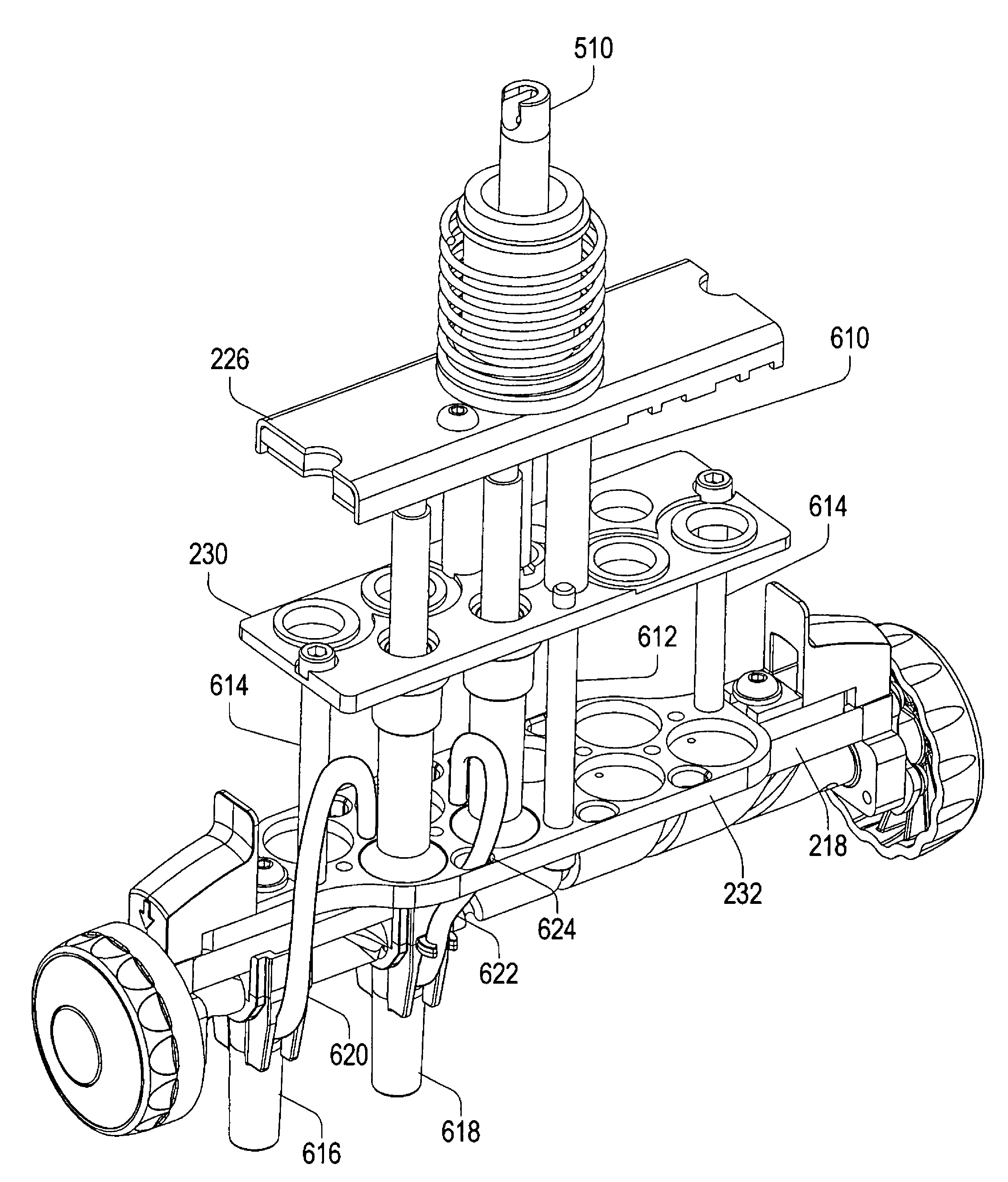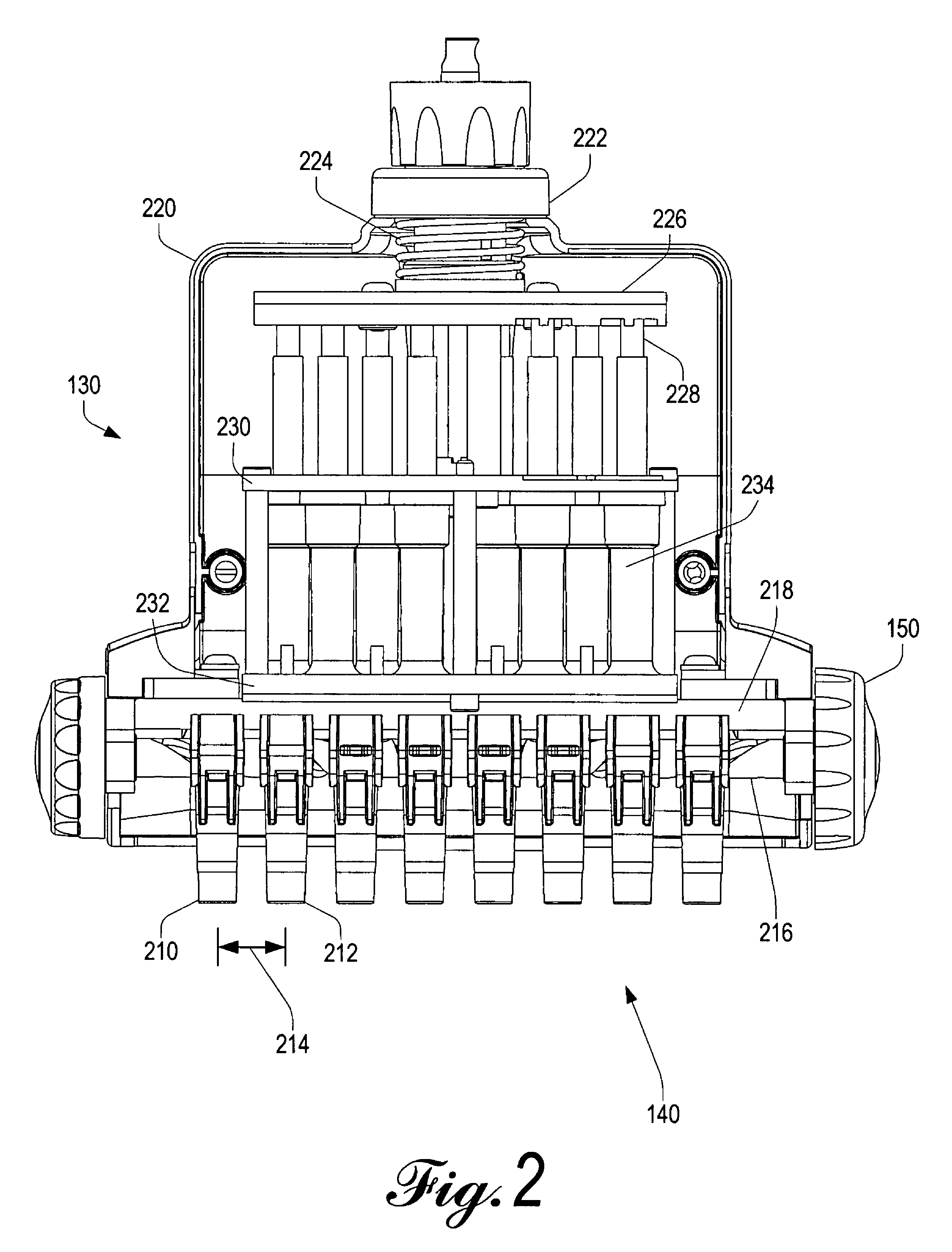Liquid end assembly for a handheld multichannel pipette with adjustable nozzle spacing
a multi-channel pipette and nozzle spacing technology, which is applied in the field of multi-channel pipettes, can solve the problems of inability to use a fixed 9 mm multi-channel pipette, and inability to rotate the nozzle in some ways, so as to prevent undesired rotation of the nozzle, the effect of convenient us
- Summary
- Abstract
- Description
- Claims
- Application Information
AI Technical Summary
Benefits of technology
Problems solved by technology
Method used
Image
Examples
Embodiment Construction
The invention is described below, with reference to detailed illustrative embodiments. It will be apparent that a system according to the invention may be embodied in a wide variety of forms. Consequently, the specific structural and functional details disclosed herein are representative and do not limit the scope of the invention.
Referring initially to FIG. 1, an electronic pipette 110 similar to one from the EDP3-Plus line of pipettes from Rainin Instrument, LLC, is illustrated. The pipette 110 includes a hand-holdable body 120 which contains a drive mechanism that acts axially within the body. In the illustrated pipette 110, a motor drives a shaft up and down within the body 120, and this movement is transferred to a liquid end assembly 130.
Although FIG. 1 illustrates an electronic pipette, it will be recognized that manually-driven pipettes may also be used. In such cases, pressure upon a plunger button will drive a shaft up and down and the same movements will be transferred to...
PUM
 Login to View More
Login to View More Abstract
Description
Claims
Application Information
 Login to View More
Login to View More - R&D
- Intellectual Property
- Life Sciences
- Materials
- Tech Scout
- Unparalleled Data Quality
- Higher Quality Content
- 60% Fewer Hallucinations
Browse by: Latest US Patents, China's latest patents, Technical Efficacy Thesaurus, Application Domain, Technology Topic, Popular Technical Reports.
© 2025 PatSnap. All rights reserved.Legal|Privacy policy|Modern Slavery Act Transparency Statement|Sitemap|About US| Contact US: help@patsnap.com



